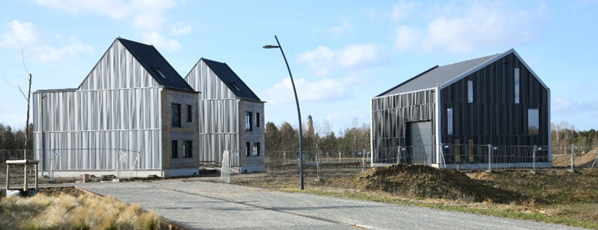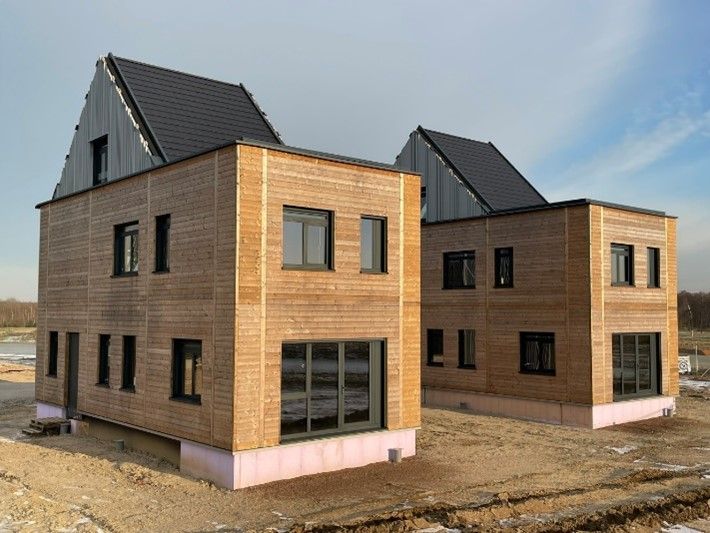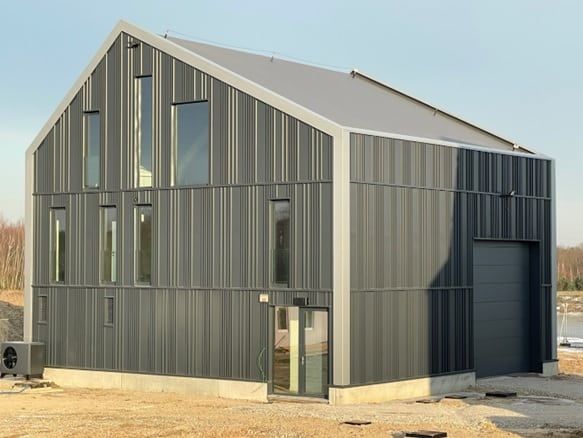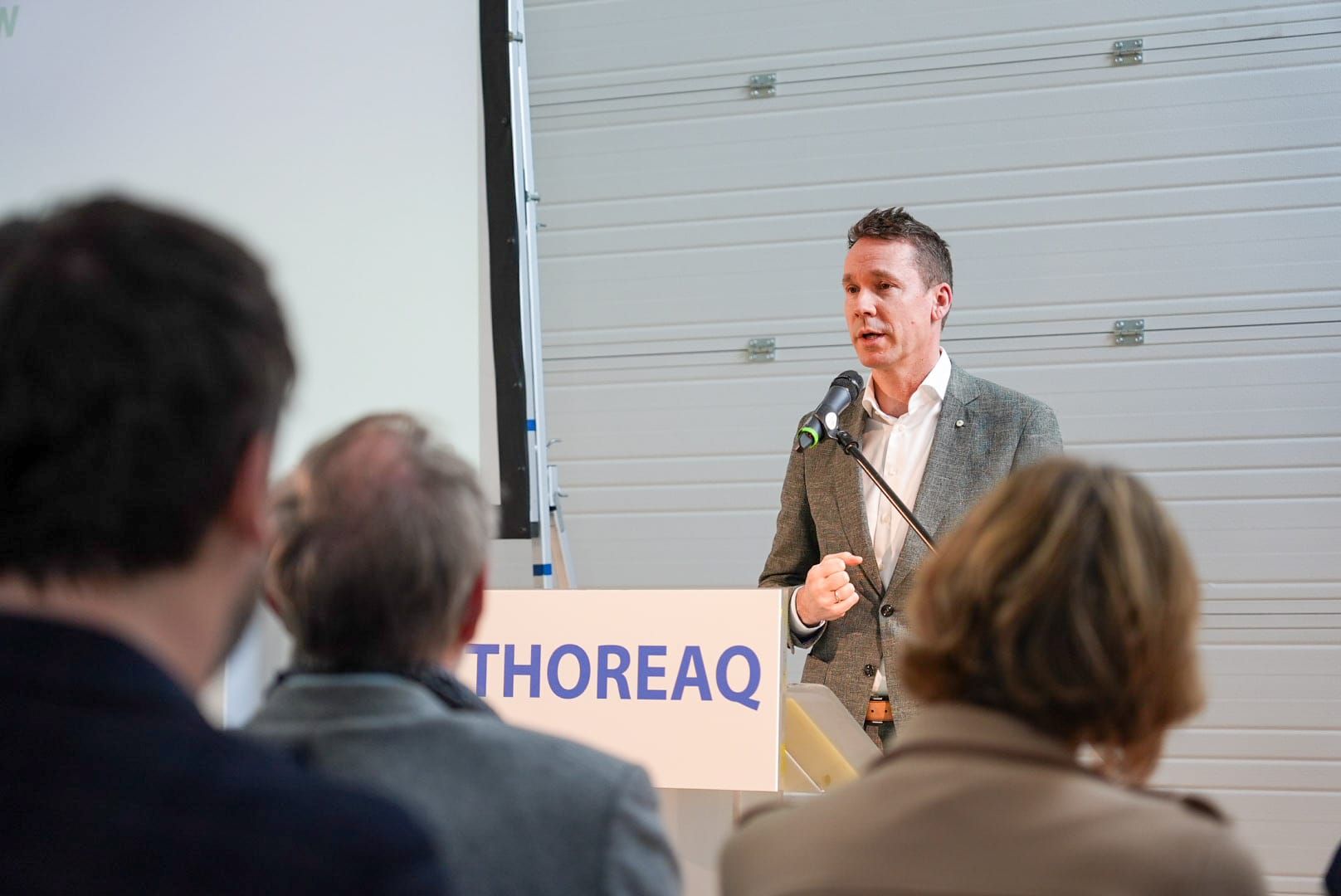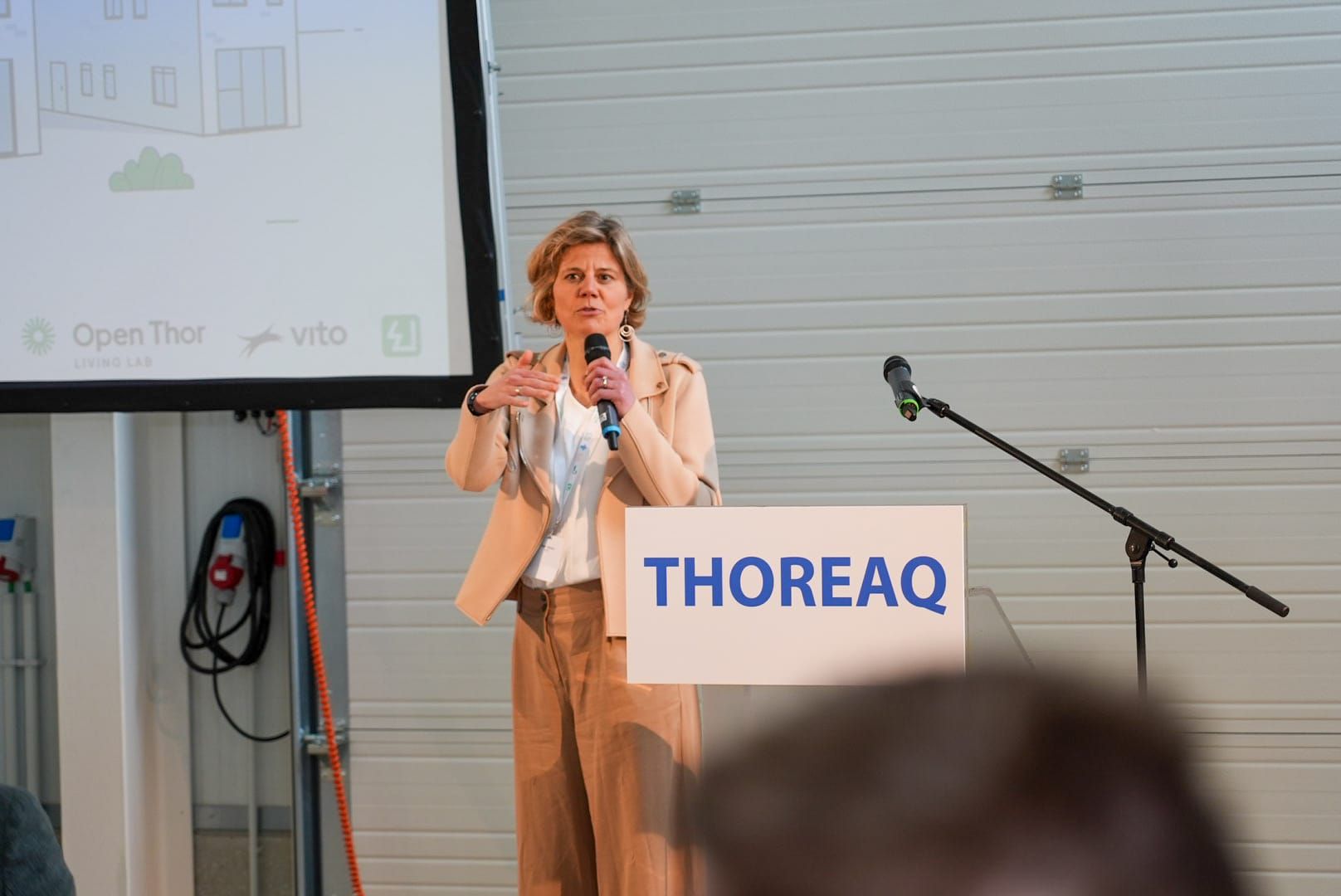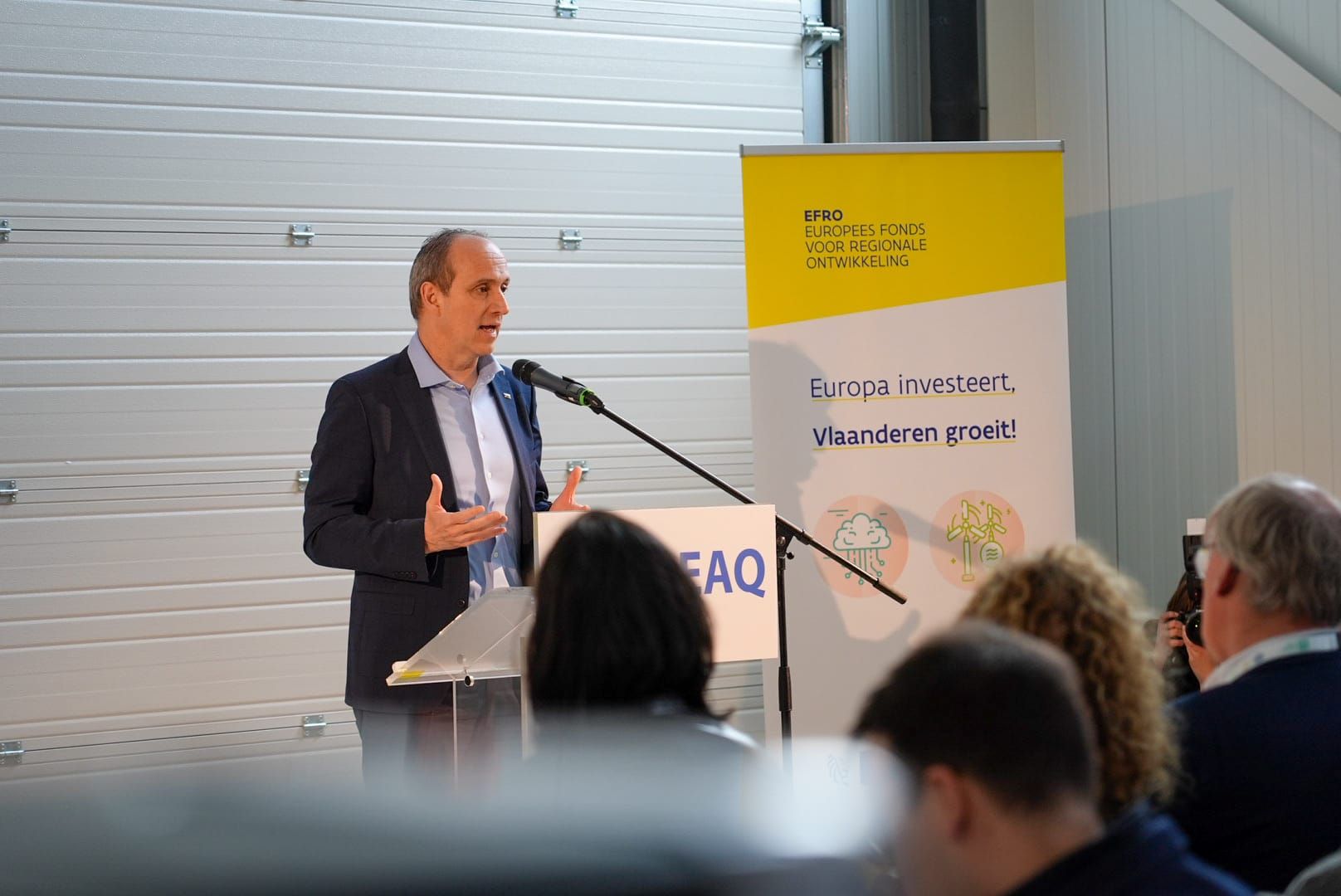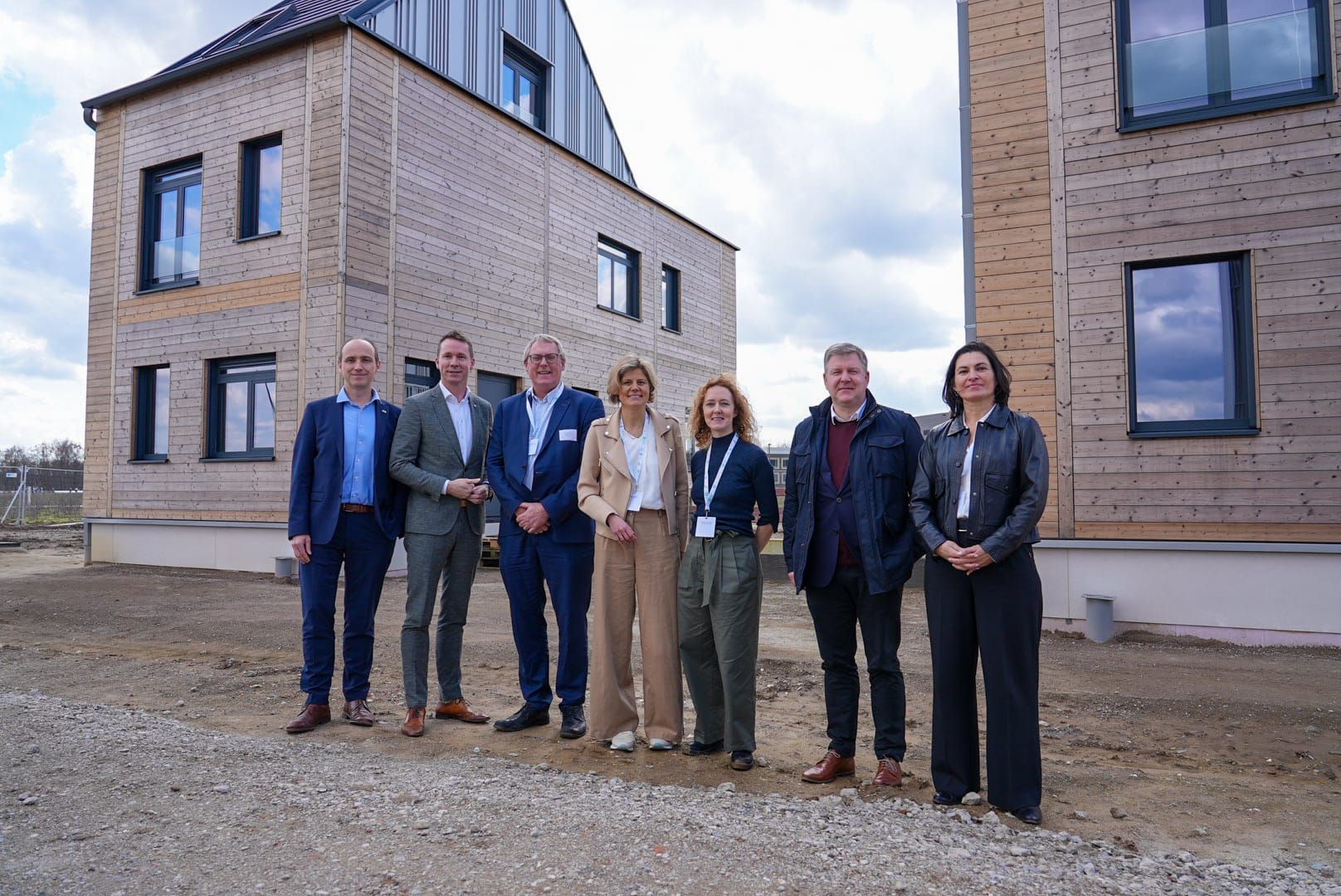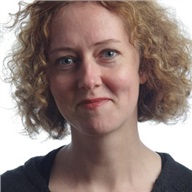THOREAQ, a unique lab for the construction sector, officially opens its doors today in the presence of Flemish Minister for Economy, Innovation and Employment Jo Brouns. THOREAQ (officially Testbed HOme Renovations, Energy solutions, and AirQuality) consists of two identical test houses, a workshop and an outdoor site lab and will be used to test, validate, and demonstrate innovations within the construction sector – such as innovative renovation solutions, the integration of smart energy technologies in existing buildings or automated building processes. This is a project by VITO and EnergyVille, representing an investment of 2 million euros, of which 1 million was financed by the European Regional Development Fund (ERDF React EU) and the Flemish Fund for Innovation and Entrepreneurship.
THOREAQ - innovation hotspot for the construction industry
Flanders faces a major challenge. By 2050 - i.e. in less than 30 years - all Flemish buildings will have to be completely climate-neutral. Knowing that our building infrastructure is among the oldest and most energy-consuming in Europe, it becomes clear that the building industry will be crucial in making the transition to a sustainable future.
To support that building sector and industry and give innovative solutions every opportunity, THOREAQ was officially inaugurated today in the presence of Flemish Minister for Economy and Innovation Jo Brouns and the Mayor of the City of Genk Wim Dries.
THOREAQ consists of two identical test houses, a workshop and an outdoor construction lab, and will be used to test, validate and demonstrate innovative renovation solutions, technologies that contribute to improving indoor air quality, solutions for better integration of energy systems in the built environment, and innovations in the field of industrially manufactured façade and roof elements and automated construction methods.
Two identical test buildings with dismountable facades and roofs
"A test infrastructure of this sort consisting of two identical, similar buildings is unique in Europe, the only one of its kind," explains Marlies Van Holm, research coordinator at EnergyVille/VITO. "The two test houses have completely identical construction and installations, the same orientation, and almost identical sunlight, shading, rain and wind loads. In addition, they will soon be equipped with virtual occupants, devices that mimic human behaviour, allowing identical (or precisely very different) occupant behaviour to take place in the two buildings. Consequently, comparative AB tests are possible: you change one parameter in one of the two houses and you can precisely measure and determine the effect/performance of that change."
"For example, if a heat pump manufacturer wants to tune its technology to different usage profiles in a controlled environment, it can simulate in residence A a family with three children, and in residence B a retired couple that uses energy mainly throughout the day, under identically the same conditions. Similarly, if a manufacturer wants to demonstrate that its product is 10% more energy-efficient than that of its competitor, it can do so via simulations in the two buildings," Marlies Van Holm clarifies.
The buildings were also fitted with dismountable facades (3 of the 4 facades/house) and dismountable pitched roofs. The underlying concrete support structure, fitted with anchor rails, allows any type of external facade to be installed all around the buildings. Different building materials or integrated techniques such as solar panels in the building facades can thus be extensively tested within THOREAQ.
Collaboration is key
Now that the test facility has been officially opened, the test houses will be further equipped with the necessary technologies, interior finishes, sensors, and virtual residents (during 2024-2025). After that, the test houses will be opened to companies, research partners or other interested parties to test, optimise and demonstrate their innovative products and services full-scale and lifelike in a safe and controlled environment.
Inge Neven, CEO of VITO: "Construction is one of the crucial sectors in the evolution towards a sustainable future. The different elements regarding material choices, insulation and energy need to fit together perfectly to achieve the best and most sustainable results, affordable for everyone. So here, in addition to innovation and technological progress, coordination between the various parties along the value chain is of great importance. Together, we can establish the foundations for practical solutions that will make our buildings futureproof and affordable, and reduce their CO2 emissions and climate impact."
Robotics in the construction sector
Robotics will also be given a role within THOREAQ. "In the coming years, VITO and EnergyVille expect a lot of innovation in close cooperation with industry and research partners to improve products and processes in terms of sustainability, integration of new materials and techniques in the field of automation and robotics," Marlies Van Holm clarifies. As a result, in addition to the identical buildings, the workshop will also house specific research into new building envelope elements (roof and facade elements) and automated construction methods.
In order to also test these technologies outdoors and at full scale, an outdoor construction lab will also be built in a final phase. On top of that, the buildings will be plugged into the Open Thor Living Lab's heat and DC grid in 2024, which will also enable energy exchange with the other buildings on the site.
The realisation of the THOREAQ infrastructure was jointly made possible by the support of ERDF React EU and the Flemish Fund for Innovation and Entrepreneurship.

